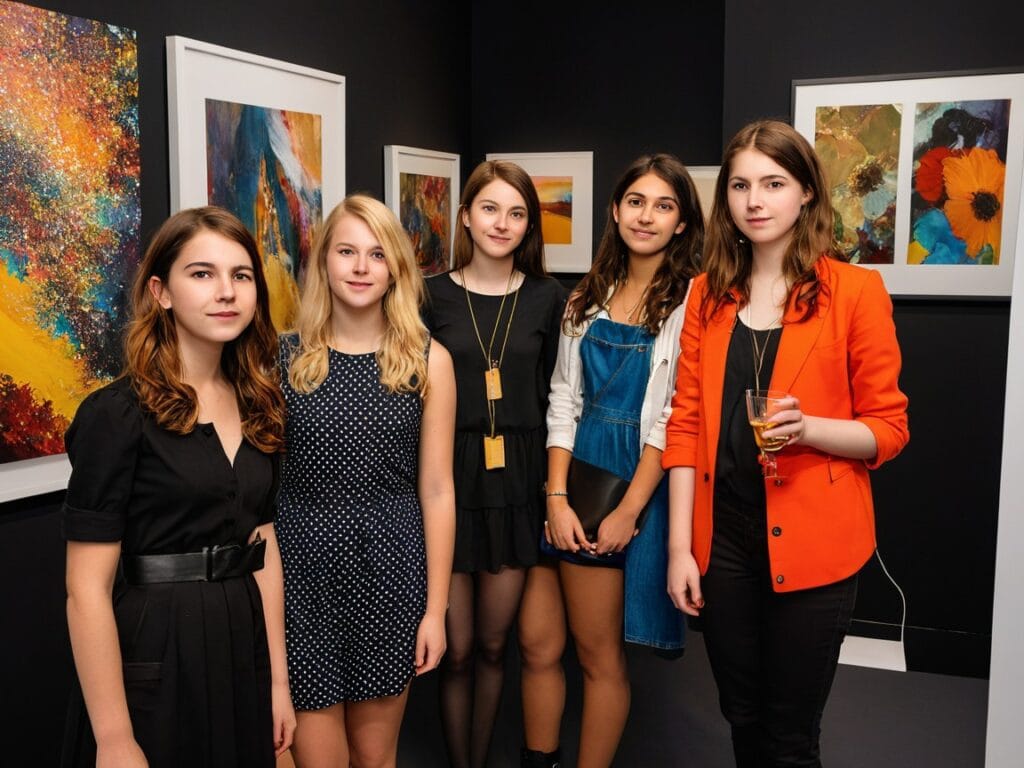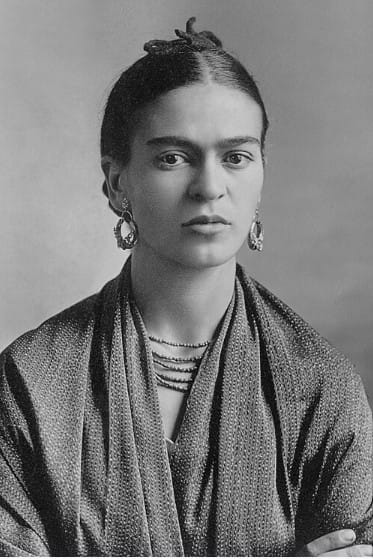How Picasso’s Work Influenced Global Art Movements
Introduction: A Revolutionary Force in Art
Few names in the history of modern art command as much respect, intrigue, and impact as Pablo Picasso. With a career that spanned over seven decades and touched nearly every medium of visual art, Picasso not only changed how we perceive form and structure but also redefined the very foundation of artistic expression. Born in Spain in 1881, Picasso’s influence was not limited to his homeland or to Europe—it reached artists across continents and generations, transforming global art movements and inspiring a visual language that continues to evolve today.
Picasso’s influence on global art is undeniable. His innovations, especially in Cubism, helped break down traditional perspectives and encouraged artists worldwide to abandon realism and embrace abstraction, experimentation, and freedom of interpretation. This post explores how his work deeply shaped various art movements across the globe, from Europe and the Americas to Asia and Africa.
The Birth of Cubism and Its Global Echo
In the early 20th century, alongside Georges Braque, Picasso co-founded Cubism, a radical approach that challenged traditional forms of representation. By deconstructing subjects into geometric shapes and depicting multiple viewpoints simultaneously, Cubism revolutionized how artists viewed and represented reality.
Cubism’s influence soon expanded beyond Parisian studios. In Russia, artists like Kazimir Malevich and Liubov Popova embraced Cubist aesthetics, fusing them with abstraction and Suprematism. In Italy, the Futurists absorbed Cubism’s structural innovations to express speed, movement, and modernity.
In the United States, Cubism inspired early American modernists such as Stuart Davis and Charles Demuth, laying the groundwork for future developments in Abstract Expressionism and Minimalism. Picasso’s Cubist logic served as a visual vocabulary for artists eager to break away from realism and traditional narrative.
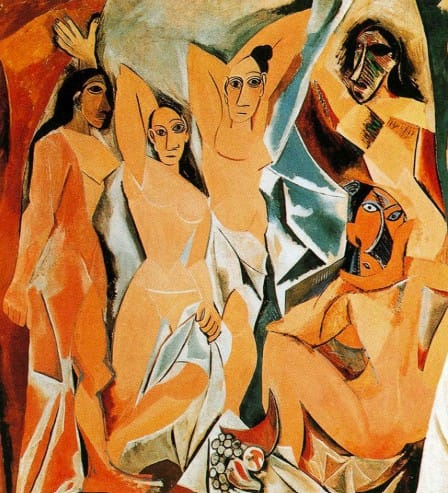
The Impact on Abstract Expressionism
While Picasso never fully embraced Abstract Expressionism, his approach to emotional spontaneity and distortion of form greatly influenced its key figures. In post-war America, artists like Jackson Pollock, Willem de Kooning, and Mark Rothko found inspiration in Picasso’s bold lines, daring compositions, and emotional intensity.
De Kooning once remarked how Picasso’s paintings showed him how to ‘fight through the canvas,’ a sentiment that echoed the core philosophy of Abstract Expressionists. Picasso’s fearless experimentation gave artists permission to push boundaries, both in content and technique.
Picasso’s work, especially during the Blue Period and Guernica, showed that abstraction could carry profound emotional and political weight. This directly informed Abstract Expressionists’ pursuit of the sublime through abstraction.
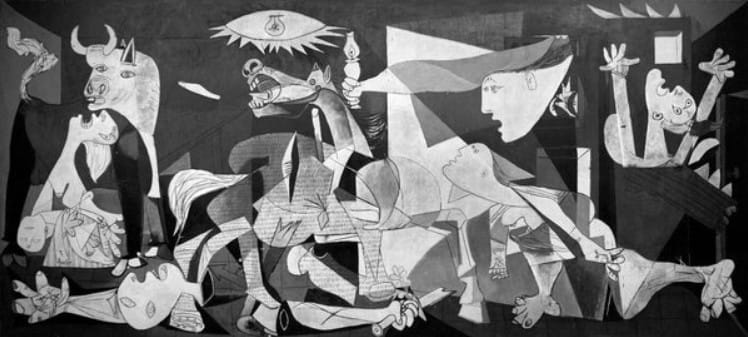
Picasso and Surrealism: The Mind Unleashed
Although never a formal member of the Surrealist movement, Picasso’s work intersected heavily with Surrealist themes. His association with André Breton and the Surrealists during the 1920s and 1930s ushered in a phase of dreamlike imagery, bizarre figures, and psychological depth in his work.
Surrealists such as Salvador Dalí, Max Ernst, and Joan Miró admired Picasso’s symbolic distortions and visual paradoxes. Picasso’s exploration of the unconscious and irrational mirrored the Surrealist agenda of unveiling the deeper psyche through art.
This intersection of Surrealism and Cubism deeply affected Latin American art as well. Artists like Wifredo Lam, who worked directly with Picasso, integrated Afro-Cuban spirituality, Surrealism, and Cubism into a unique visual lexicon.
From Political Protest to Artistic Advocacy
One of Picasso’s most globally influential works is Guernica (1937), painted in response to the bombing of the Basque town during the Spanish Civil War. The mural, brimming with anguish and raw expression, traveled the world and became an iconic image of anti-war sentiment.
Guernica inspired artists around the globe to use art as a form of political resistance and social commentary. In South Africa, during apartheid, and in Latin America during military regimes, artists looked to Picasso’s model of politically charged abstraction.
His blending of politics with modernist language gave credence to the idea that art could be both avant-garde and socially engaged, a balance that many contemporary artists strive to achieve.
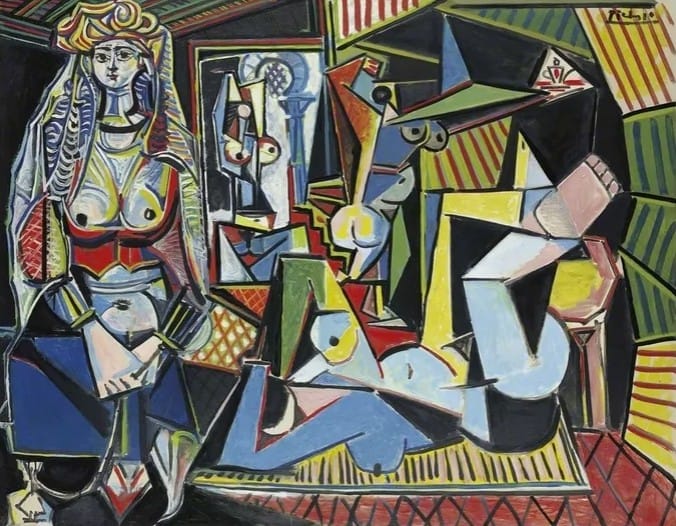
Influence in African and Oceanic Art Contexts
Picasso’s direct interaction with African tribal art, particularly masks, significantly shaped his artistic style, especially in “Les Demoiselles d’Avignon.” However, this influence wasn’t one-directional. Over time, African and Oceanic artists reclaimed and reinterpreted modernist styles—including Cubism and Surrealism—through their cultural lens.
Artists such as Ibrahim El-Salahi (Sudan) and Ernest Mancoba (South Africa) combined traditional African motifs with modernist abstraction, creating new narratives that challenged Western dominance in art history. These artists turned Picasso’s influence into a bridge between traditions rather than a cultural divide.
In Oceania, artists embraced Cubist forms to reinterpret indigenous patterns and colonial histories. Picasso’s legacy became a tool for decolonization and self-representation in regions previously marginalized by the global art market.
The Feminist Perspective on Picasso’s Legacy
While Picasso is praised for his revolutionary work, his treatment of women—both in life and art—has sparked critical feminist discourse. Many contemporary female artists and critics have re-evaluated Picasso’s legacy, challenging the romanticism of the “tortured genius” and highlighting the misogyny embedded in his representations.
Artists like Hannah Gadsby, Kara Walker, and Sophie Calle have referenced or critiqued Picasso’s approach to femininity in their work. These engagements—though critical—underscore the continued relevance and ubiquity of Picasso’s visual language in feminist art discourse.
His influence, therefore, exists not only in inspiration but also in resistance and critique, proving that his shadow looms large over contemporary thought.
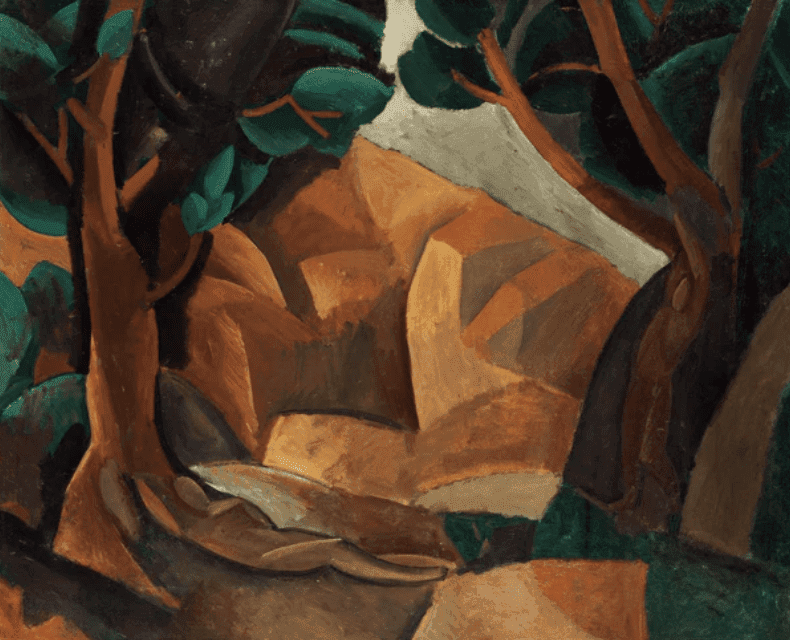
Asian Artists and the Absorption of Picasso’s Language
In Japan, China, and India, artists in the mid-20th century found a strong affinity with Picasso’s emphasis on form, gesture, and symbolic abstraction. Post-war Japanese avant-garde collectives like Gutai explored physicality and improvisation reminiscent of Picasso’s brushwork.
In India, modernist artists such as M.F. Husain, F.N. Souza, and S.H. Raza experimented with Picasso-esque abstraction while anchoring their work in Indian spirituality and aesthetics. Picasso’s freedom of form became a vessel through which post-colonial identity was negotiated.
Today, Picasso’s aesthetic echoes in the work of globally renowned Asian artists like Takashi Murakami, who blends traditional Japanese motifs with Pop Art, invoking Picasso’s blending of cultural symbols.
Modern and Contemporary Reimaginings
In the 21st century, Picasso’s influence is alive in the digital age. Artists remix his styles using AI, AR, and generative art tools, creating new visual dialogues with his legacy. His works are referenced in NFT art, digital exhibitions, and immersive installations.
Contemporary artists like George Condo, Jenny Saville, and Kehinde Wiley reinterpret Picasso’s deconstructions, expanding on themes of identity, gender, and power. These reinterpretations keep his spirit of innovation alive while evolving the narrative for new generations.
Even luxury brands and design industries reference Picasso’s visual codes, from fashion collections to product packaging. His aesthetic, now part of global visual literacy, influences not just fine art but everyday design.
Picasso’s Role in Global Art Education
Art schools around the world still use Picasso’s work to teach form, color theory, and emotional expression. His stylistic diversity makes him an ideal figure for exploring multiple techniques and philosophies in a single curriculum.
His prolific career allows educators to illustrate art’s transformative potential, from academic realism to surreal abstraction. This makes Picasso a timeless case study for both technical skill and conceptual exploration.
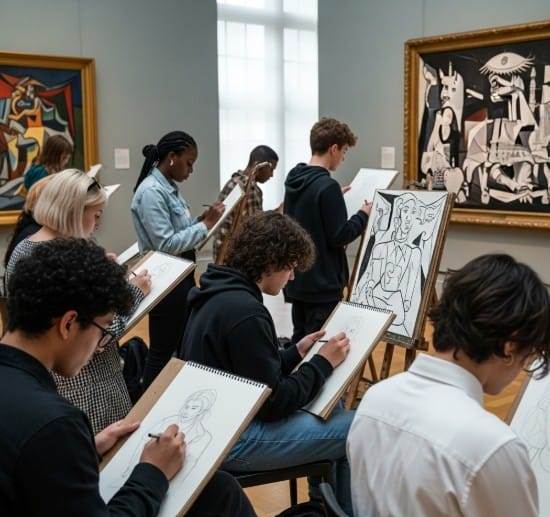
Linking Legacy to ISKUSS
At ISKUSS, our commitment to showcasing art rooted in culture aligns with how Picasso blended tradition with modernity. Whether you’re exploring Cubist-inspired works or bold contemporary reinterpretations, ISKUSS celebrates the enduring influence of pioneers like Picasso in today’s global art scene.
Explore our exclusive collection at ISKUSS, where global artistry and cultural depth meet in each curated piece.
Conclusion: Picasso’s Influence Endures
Picasso’s legacy transcends time, geography, and medium. His radical departure from tradition empowered artists around the world to explore the abstract, the political, the emotional, and the spiritual. Whether through admiration, critique, or reinterpretation, Picasso continues to influence global art movements in profound and varied ways.
His work is not just part of history—it’s part of the ongoing artistic dialogue that defines our present and shapes our future.
Learn more about Picasso’s global influence from the official Museo Picasso Barcelona.

